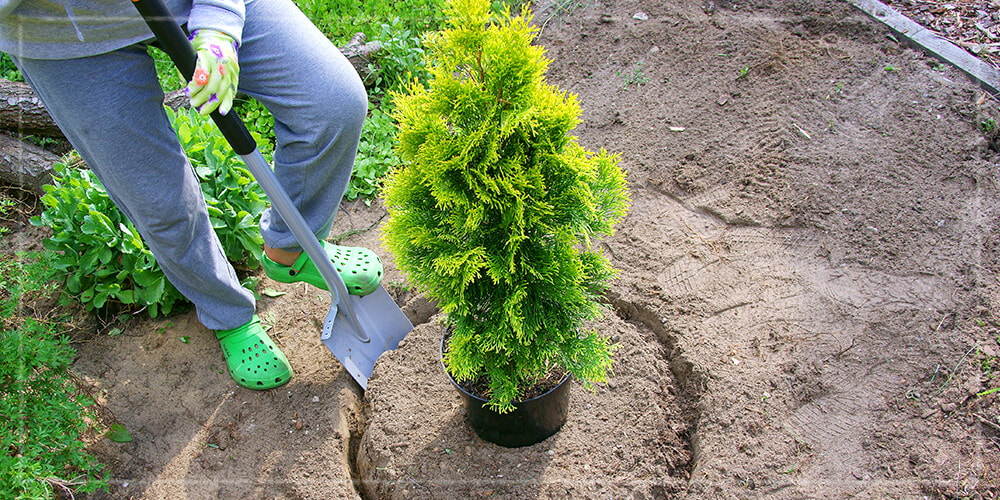How to Plant & Care for Evergreen Shrubs
From Abelia to Wax Myrtle, there is a long list of evergreen shrubs that thrive in North Carolina and will lavish your yard with color and vibrancy all year long. Caring for evergreen shrubs is also simple, especially once they’re established. Here’s how to ensure your evergreen shrubs will live a long, healthy life.
When Should You Plant Evergreen Shrubs
Planting at the right time is the first step in caring for your evergreen shrubs. In North Carolina, you can plant shrubs in the fall, late winter, and early spring, but the best time to plant is fall.
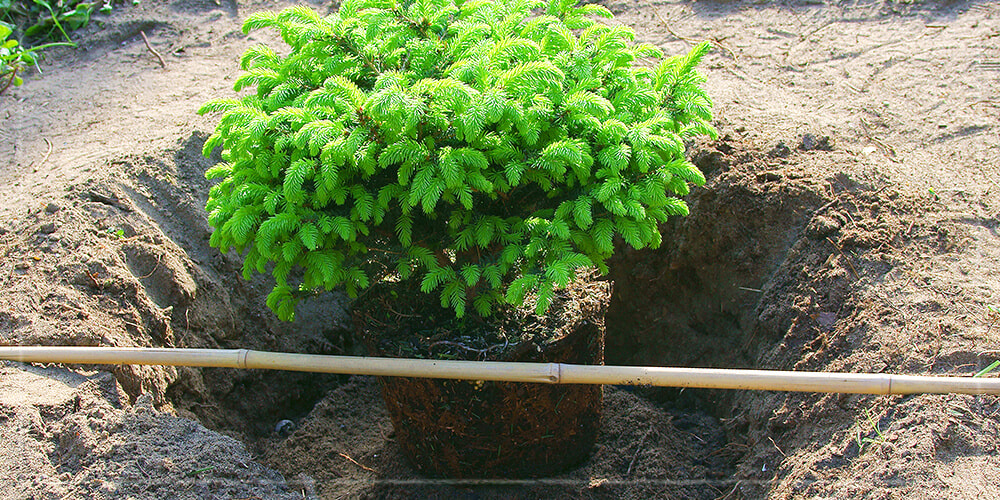
Step=By-Step Instructions for Planting Your Shrubs
- If possible, schedule your planting for an afternoon or evening when it’s less sunny.
- Dig your planting holes just before your shrubs arrive. A hole should be as deep as the root ball—but no deeper—and about three times as wide as the root ball.
- Once you have your shrubs, begin planting as soon as possible, so they don’t dry out.
- Take the shrub out of its pot or burlap and inspect the roots. Are they clumped tightly together? If so, gently pull the roots apart so they’ll be able to spread out and grow deeply.
- Put the shrub in its hole and center it.
- Now it’s time to make sure that you don’t plant the shrub too deep. If you plant it deeper than it was growing in its container, it’s not likely to thrive, and it might even die. So, lay a shovel or rake handle across the hole to measure if the top of the root ball is slightly higher or at least level with the top of the hole. If it’s not, take the shrub out of its hole and add enough soil so that the root ball will be at the right height.
- Once you’ve ensured the root ball is high enough, center the shrub in its hole again.
- Have an assistant hold it straight up or stake it. Fill the hole with soil about halfway. A note about soil: your shrub will have a head start in life if you plant it in high-quality soil enriched with compost and other nutrients. We offer a few kinds of compost and soil that would add a bounty of nutrients to the soil in your planting holes.
- Water thoroughly.
- Once the water has soaked down, fill the rest of the hole with soil.
- Tamp the soil down with the back of a shovel or a few taps of your hands or feet.
- Create a small berm (a flat, round mound of soil) around the root ball. Make it about 2-3 inches tall. This will help water soak into the root ball instead of drain away.
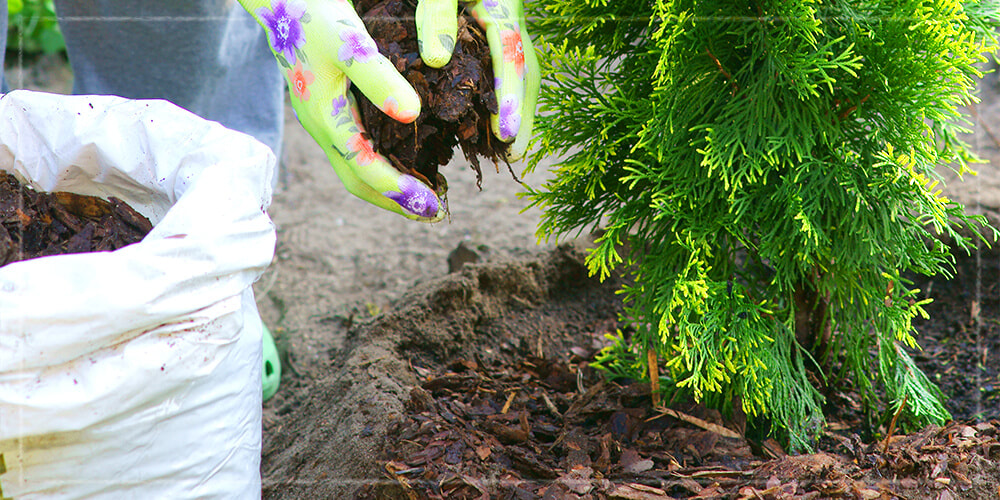
Mulching
Finish off your newly planted shrub with a layer of mulch about 3-4 inches thick. Not only is mulch aesthetically pleasing, but it’s also particularly good for plants that are establishing themselves in a new home. It keeps their roots cooler in summer and warmer in winter and it retains soil moisture.
Make sure your mulch layer is flat. If you create a volcano-like mound of mulch around your shrubs, it could cause them to rot and die.
Caring for Evergreen Shrubs
After you’ve planted your shrubs, it’s time to nurture them so that they successfully establish themselves in their new homes. The key? Consistent watering.
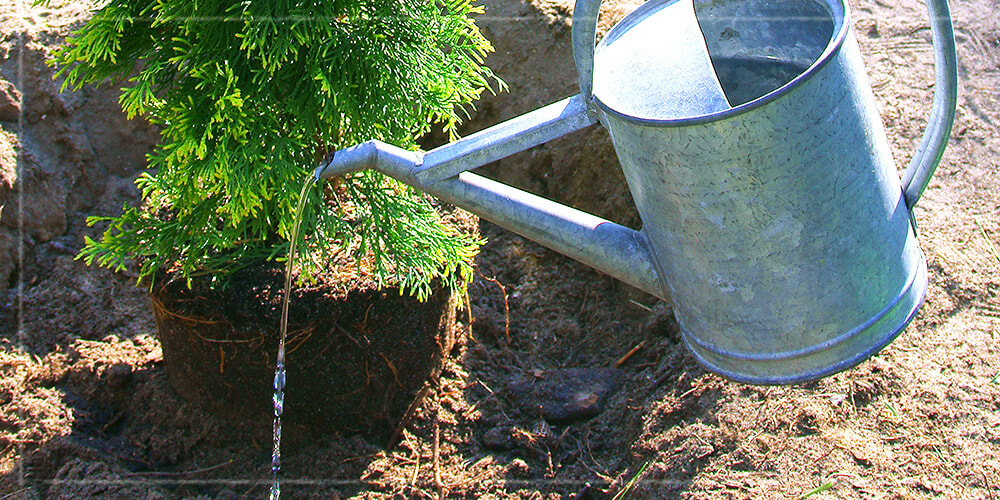
How Often You Should Water
Your shrubs could take as long as a year to get fully established, and during this time, they need to be watered frequently and regularly. For the first two weeks, very thirsty plants like Tea Olive and Wax Myrtle may need water every day or every other day. Boxwoods and Camellias don’t use as much water and may need less frequent watering. Watering once every two or three days may be enough for them. Later, you may be able to go longer between watering your new plants, but the frequency also depends on daytime temperatures and the porosity of the soil, so be sure to check the top of the root balls to make sure they are not drying out in between. Keep this up for the next few months. For example, if you planted them in the fall, keep this routine going all the way to spring. If it’s a dry spring, your frequent watering will need to continue.
Beware of Overwatering
It is possible to drown shrubs with too much water. So, keep a watchful eye on them for signs of overwatering. One such sign is leaf loss. It’s normal for newly planted shrubs to lose up to half their leaves because of the stress of being moved. However, if you give them the same amount of water consistently and they lose more than half their leaves, it’s likely because of overwatering, and you should ease off.
Fertilizing
Wait until your shrubs are well-established before you begin fertilizing. Even after they’re established, they may not need fertilizer if they’re growing in high-quality soil or in a lawn that’s fertilized regularly.
That being said, fertilizer for recently established shrubs is proven to speed up their growth. The best fertilizer for such evergreen shrubs is the slow-release type. This type of fertilizer gradually releases nutrients. Select a slow-release fertilizer formulated for shrubs, and follow the instructions carefully. Better yet, have your soil tested. The NC Department of Agriculture Soil Lab will recommend the best type of fertilizer that fits your plants’ needs. We have the supplies needed to send samples to the lab and we will help you through the process at no cost. You can also pick up the required supplies at the Pitt County Ag Center.
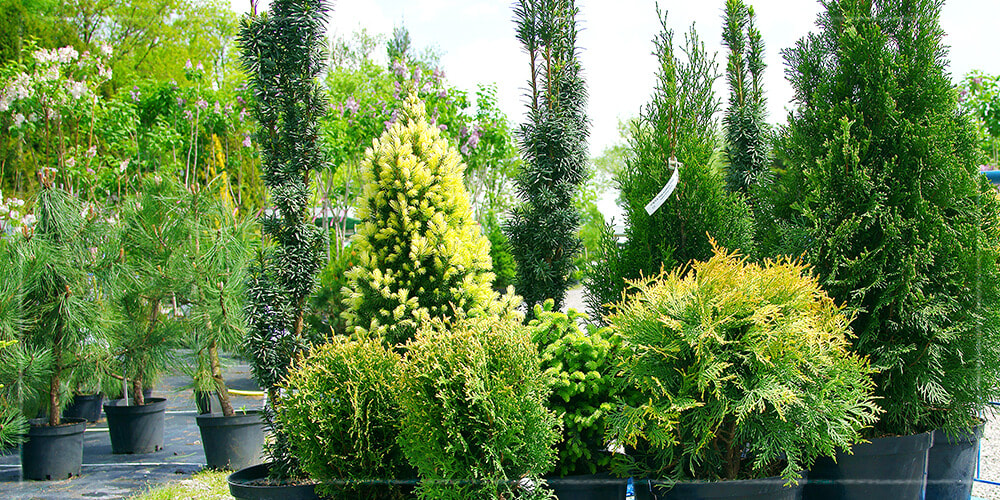
Over 80 Varieties of Evergreen Shrubs at Carolina Seasons Nursery
Ready to imbue your landscaping with four-season beauty and discover some evergreen shrubs? We grow over 80 varieties! Visit our garden center to browse our collection and get advice about which shrubs will best suit your property and its growing conditions.

